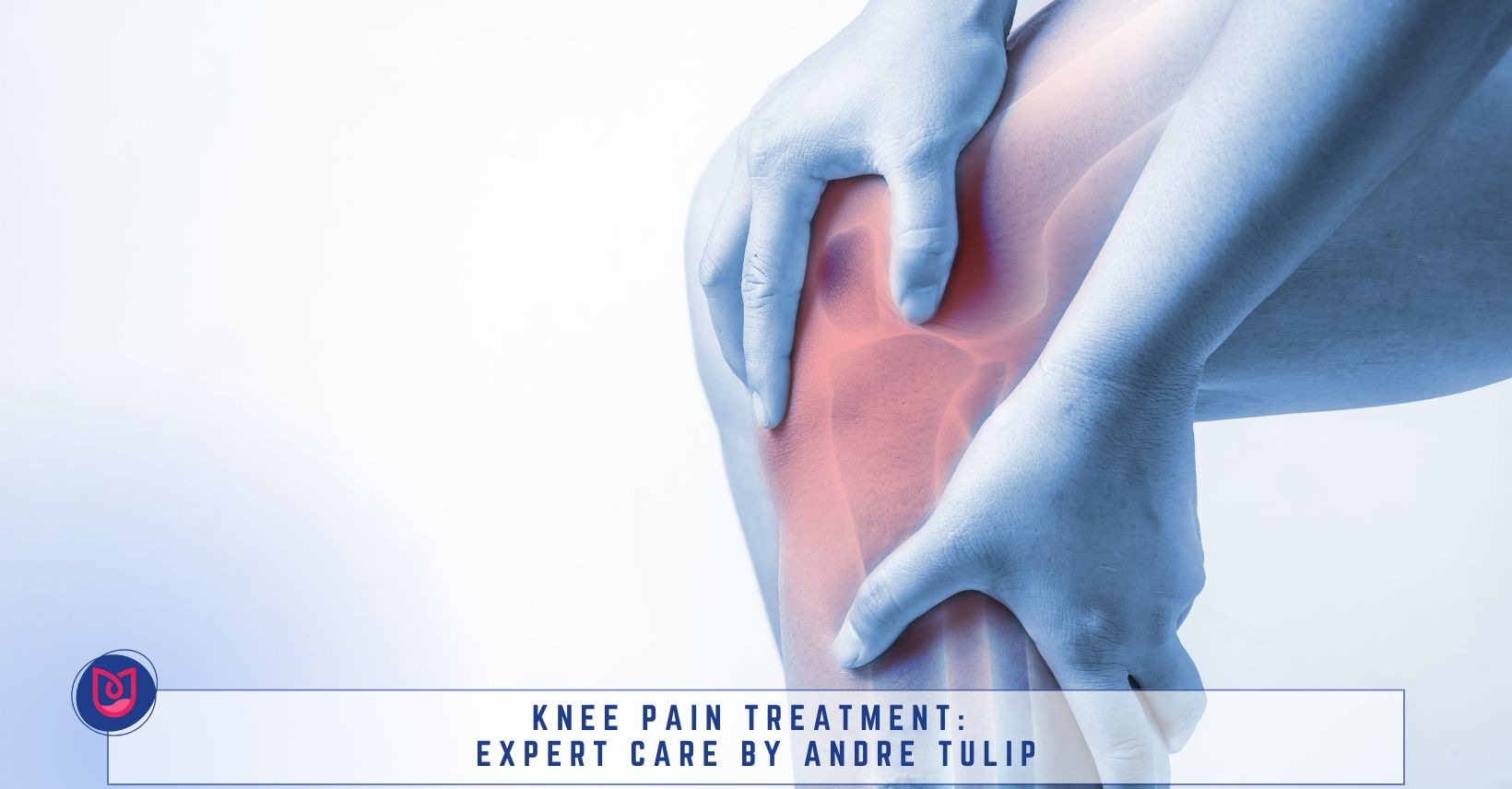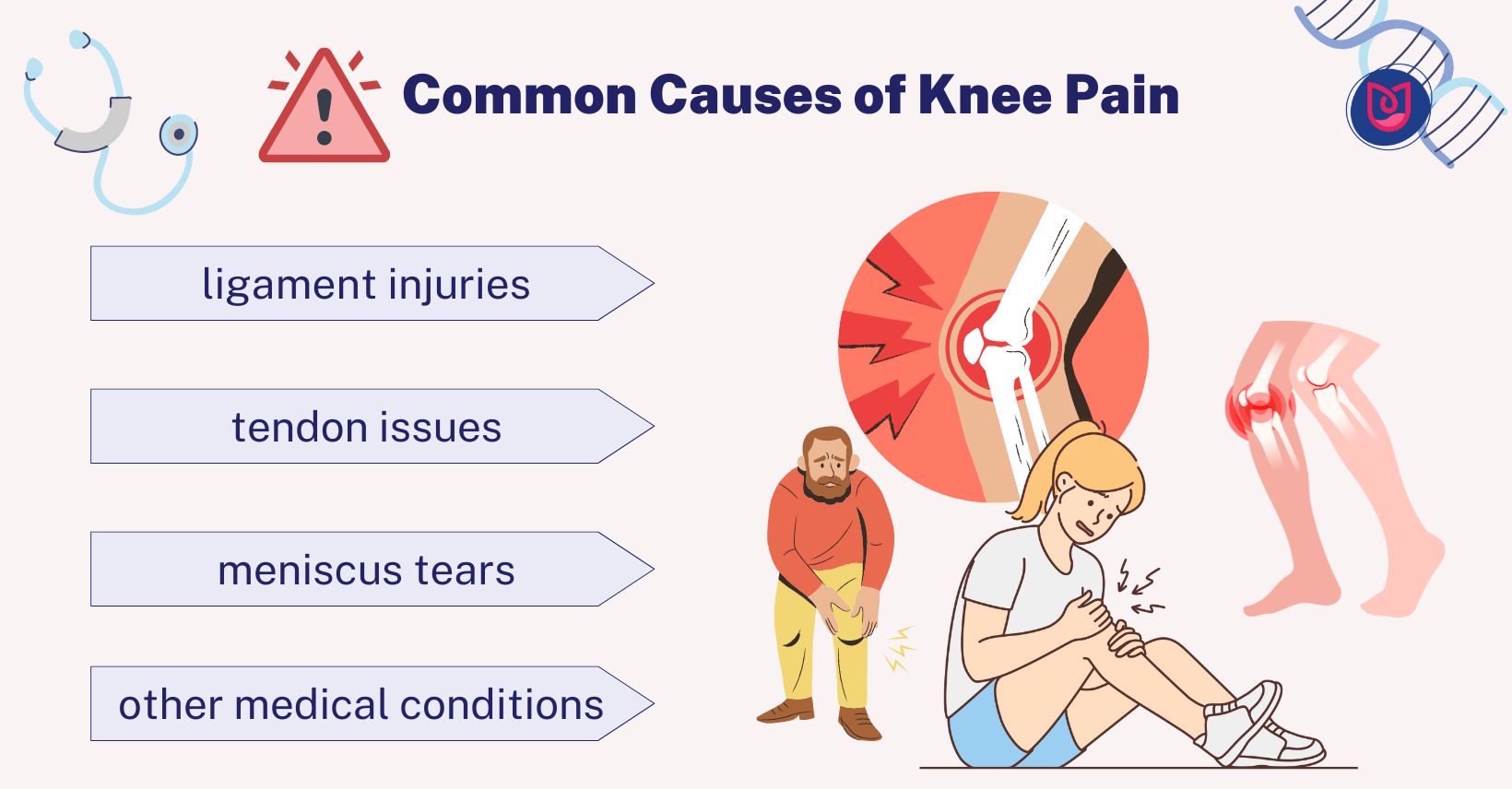
Are you experiencing knee pain and searching for effective treatment options?
We will examine the usual causes of knee pain, the various treatment methods available, and the importance of seeking a physiotherapist for a successful recovery.
Explore the range of non-surgical, surgical, and alternative treatments for knee pain, and learn about the treatment process with specialist Andre Tulip.
Understanding Knee Pain
Knee pain affects people of all ages and can significantly impact mobility and quality of life. To manage knee pain effectively, it is important to understand the underlying causes, symptoms, and treatment options. This understanding can lead to better care and improved outcomes, prompting a look into the common causes of this discomfort.
What Are the Common Causes of Knee Pain?

Knee pain may stem from ligament injuries, tendon issues, meniscus tears, and conditions like Osgood Schlatter’s disease, all contributing to pain and swelling. Injuries to ligaments such as the ACL or MCL can cause instability and pain, while tendon problems like patellar tendinitis manifest as movement-related pain. Meniscus tears, often due to sports or age-related wear, typically lead to joint pain and swelling. Osgood Schlatter’s disease, common during adolescent growth spurts, results in pain below the kneecap. Understanding these causes is the first step towards exploring the types of treatments available for knee pain.
Types of Knee Pain Treatment
Knee pain treatment varies from non-surgical methods like physiotherapy and medication to surgical interventions for more severe cases. Treatment choice depends on the specific knee condition and the severity of symptoms, with non-surgical treatments often being the first approach.
Non-Surgical Treatments
Non-surgical options for knee pain include:
- Using ice packs to reduce swelling.
- Taking painkillers to manage discomfort.
- Undergoing physiotherapy to strengthen the knee and improve mobility.
Ice packs help reduce inflammation after an injury, while painkillers provide temporary relief during acute pain phases. Physiotherapy aims for long-term management by improving muscle strength and joint flexibility, addressing the root cause of pain, and aiding overall recovery.
Surgical Treatments
In severe cases where non-surgical methods are insufficient, surgical treatments such as ACL reconstruction, knee arthroscopy, or knee replacement may be considered. ACL reconstruction involves replacing a torn ligament to stabilise the knee. In contrast, knee arthroscopy allows for treating problems through minimal incisions. Knee replacement surgery involves substituting damaged knee parts with artificial components. Post-surgery recovery can vary, but the ultimate goals include pain relief, enhanced mobility, and restored function. Surgical risks and outcomes depend on individual circumstances, making it essential to consult healthcare professionals to determine the most appropriate treatment.
Alternative Treatments
Exploring alternative treatments for knee pain can include strengthening exercises and therapies like acupuncture or herbal remedies. Acupuncture is noted for its effectiveness in reducing pain and inflammation. At the same time, herbal remedies like turmeric and ginger offer anti-inflammatory benefits. Physical therapy is another alternative treatment, focusing on strengthening and increasing flexibility in the knee joint. Combining these methods with conventional treatments can provide comprehensive care and better outcomes, highlighting the importance of seeking a physiotherapist in treating knee pain.
Why Should You Seek a Physiotherapist to Treat Knee Pain?
Seeking a physiotherapist for knee pain treatment is essential, as they ensure a diagnosis and treatment plan based on the latest medical evidence and best practices. Physiotherapists like Andre Tulip offer valuable insights and resources for effective management, which are important for addressing the symptoms and the individual’s overall health and well-being.
What to Expect During Knee Pain Treatment with Andre Tulip
Undergoing knee pain treatment with specialist Andre Tulip includes an initial consultation, diagnostic tests, and a personalised treatment plan. The initial consultation involves a detailed assessment of the patient’s history and symptoms, followed by physical examinations to identify the pain’s root cause. Diagnostic tests like MRI or X-rays provide a deeper view of the knee structure, aiding in an accurate diagnosis. The treatment plan typically combines physiotherapy, pain management, and possibly dietary adjustments to enhance recovery. Regular progress check-ins are essential to adapt the treatment as needed, ensuring effective long-term management of knee pain.
Schedule a Consultation with Andre Tulip Today!
If you suffer from knee pain and need expert treatment, consult with Andre Tulip today. Specialising in personalised treatment plans, Andre Tulip helps patients achieve long-term relief by addressing the root causes of knee pain. Early intervention is important, and with Andre Tulip’s guidance on exercises, lifestyle changes, and advanced therapies, you can take the first step towards a healthier, pain-free life. Take the time to seek the care you need to improve your quality of life!
Frequently Asked Questions
How do you make knee pain go away?
Alleviating knee pain often entails a mix of rest, physiotherapy, proper use of painkillers, and sometimes medical or surgical interventions. Resting initially helps the joint heal, avoiding activities that exacerbate the pain. Gentle exercises such as swimming or cycling improve muscle strength and knee flexibility. Physiotherapy, important in recovery, involves a therapist devising an exercise plan to enhance mobility and reduce pain, focusing on stretching, strengthening, and balance.
Is walking beneficial for knee pain?
Walking can aid knee pain by maintaining joint mobility and strengthening surrounding muscles, provided it’s done correctly and in moderation. It improves circulation, eases joint stiffness, and helps with weight management, reducing knee stress. Proper footwear is essential for shock absorption, and stretching before and after walking prevents injuries. Proper posture and stride reduce knee strain.
Do squats help knee pain?
Proper squat technique can strengthen the knee muscles, helping alleviate pain. Proper technique is vital; ensure your knees don’t extend beyond your toes to minimise knee pressure. Keep your back straight and core engaged to improve knee stability and flexibility. Consider lower-impact exercises like leg presses, step-ups, or wall sits for severe knee pain to strengthen without strain.
What to take for knee pain?
Over-the-counter painkillers like ibuprofen or paracetamol are effective for knee pain relief. Still, they should be used responsibly and under guidance for persistent pain. These medications reduce inflammation and discomfort, but potential side effects include stomach upset and liver damage. Always consult a healthcare provider before starting any medication to ensure it’s safe and appropriate for your needs.
Can I continue my daily activities during knee pain treatment with Andre Tulip?
Andre Tulip generally encourages continuing daily activities during knee pain treatment, with modifications to avoid aggravating the knee. Following his advice ensures optimal recovery.
How long does it take to recover from knee pain treatment with Andre Tulip?
Recovery from knee pain treatment with Andre Tulip varies based on the severity of the condition and the specific treatment plan, focusing on comfort and efficient recovery.